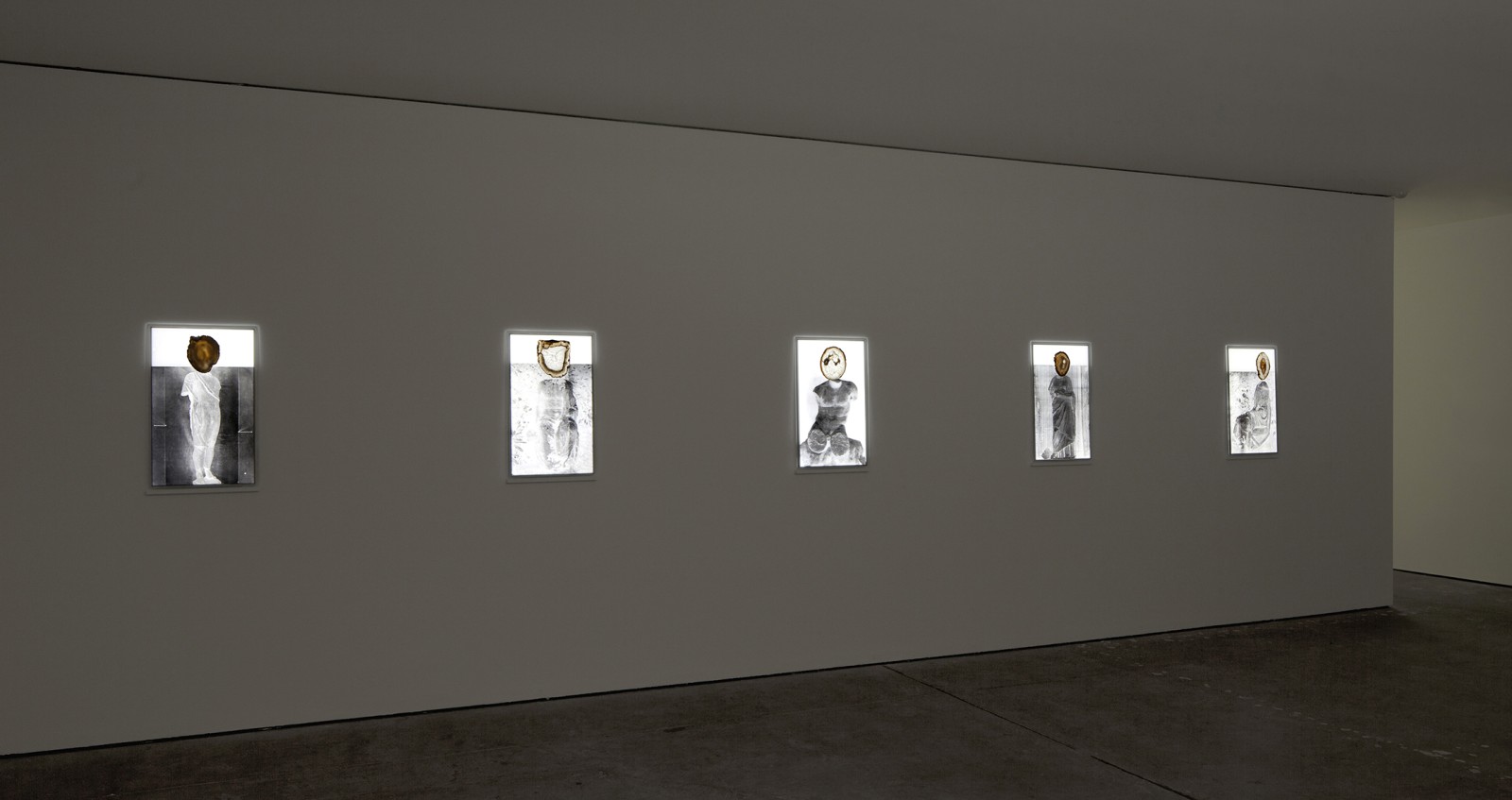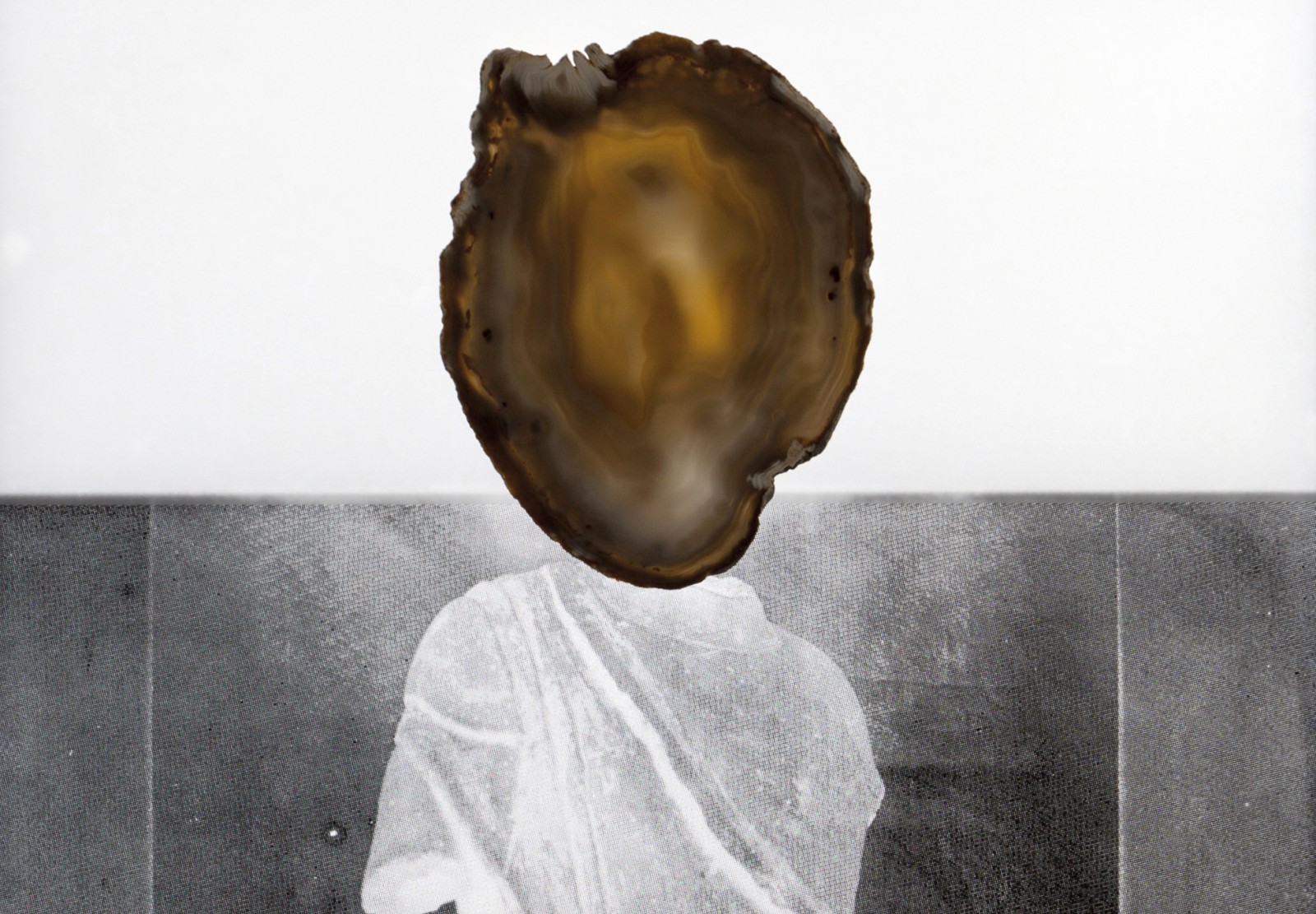Head Replacement Therapy (Plundered) II-V : 2012
A series of 5 photographic screen prints on etched glass, sliced agate,electroluminescent panel
1. Head Replacement Therapy (plundered) II
2. Head Replacement Therapy (plundered) III
3. Head Replacement Therapy (plundered) IV
4. Head Replacement Therapy (plundered) V
5. Head Replacement Therapy (plundered) VI
79 x 48.5 x 3.5 cm

HEAD REPLACEMENT THERAPY
a text by Michael Graf
Ancient artefacts rarely survive until the present day intact. This is especially true of Greek and Roman sculptures with their exposed arms, legs - and heads. There has always been a compulsion to restore damaged statues to wholeness, but this gathered speed during the period of the Antiquity-crazed Renaissance. By using similarly matching classical fragments, or by carving new ones, contemporary sculptors healed maimed gods and heroes, as if in a life-sized doll’s hospital.
Many sculptures were widely copied during Antiquity, which assisted accurate restoration. Occasionally, literary descriptions of the originals aided visualisation (or identification as in the case of Pliny’s account of the Laocoon). Given the basic principles of restoration, it took the artistic insight of a Michelangelo to fully appreciate, and give fame to, a highly fragmented (and never restored) statue like the Belvedere Torso. The integrity of the object’s actual state would have to wait until the 19th century when the science of Archaeology became paramount.
Midway between the restoration/conservation divide is Rilke’s 1907 poem “Archaic Torso of Apollo”, in which a meditation on the intense beauty of a broken sculpture allows the writer to summon the absent, “legendary” head – an act of imaginary restoration. And although interest in the Classical world was never far from many progressive art movements of the 20th century (Picasso is a reliable barometer), it took Surrealism, via Freud, to realise the un-classical side of the Classical world. De Chirico’s oneiric retelling of Greek myths is just one example of this engagement. But at no age prior to this time would anyone dare to transform classical statuary – contra Rilke – into something monstrous by re-imagining them with an incongruous and out-sized head as Andrew Hazewinkel has done in his series of six photographic objects, Head Replacement Therapy: (plundered II-VI).
Hazewinkel has been animating material sourced from the Classical world ever since his 2006 residency at The British School at Rome. In particular, numerous projects have been generated from items found in the Marshall Collection, which is held in the School archive. This little known extensive collection comprises late 19th century photographic documentation of Classical sculptures, and their glass negatives, which originally assisted in the commercial trading of the sculptures.
With Head Replacement Therapy: (plundered II-VI), Hazewinkel has juxtaposed images of headless statues from this collection with thin cross-sections of agate placed so as to mimic the absent cranium. The restored heads are radically disproportionate in size to “their” bodies, and imply that the brain’s cavity has expanded to accommodate the thoughts and memories of centuries. Lacking obvious physiognomic features, the sliced stones offer a proxy: the promise of a head and a face. I can’t let go of the idea of the children’s toy, Mr Potato Head, with its comic anthropomorphism and just a touch of Mary Shelley. This tragicomic quality of ill-fitting parts relates directly to early 20th century collage satirists such as Hanna Hoch and Max Ernst, or Piranesi’s 18th century mash-ups of classical fragments. Piranesi posits a hyper-exaggerated Classical world imbued with Romantic pathos - and just a touch of absurdity. Hazewinkel may not go quite so far, especially as the agate suggests an interiority offered up for display (beautifully back-lit, as are the photo images, through the novel process of electroluminescence). His “head-replacement therapy” cedes a new life to these objects, otherwise slumbering in the limbo of the archive. They may not speak aloud like Pasquino – the beloved antique sculpture upon which Roman citizens have for centuries affixed witty and ribald messages – but they appear to think.
